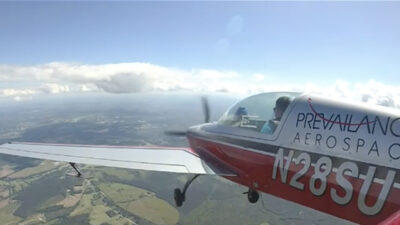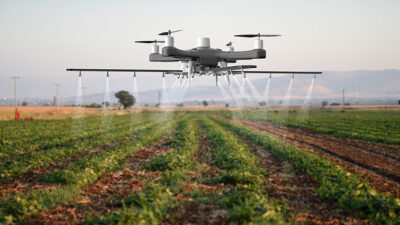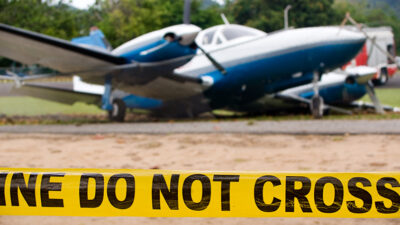SM4 Safety Articles & Resources
A wealth of knowledge provided by experts in aviation safety can be found here in our Aviation Safety Resource Library. From time-proven safety and risk management principles to updates on the latest in aviation safety regulation, you’ll find the information you need to strengthen the safety culture in your organization. The content available here can be used as curriculum in your organization’s safety systems, and the experts whose content appears here are available as aviation safety consultants and safety trainers.
Click on a category below or use the search tool on this page to find the resources you need. If there is a topic you would like to see us cover in the future, let us know by emailing us at Javascript must be enabled to see email addresses..

More Than a Box Tick: Achieving Operational Flexibility With an FRMS
Moms know best. This adage holds true in many domains of family life—allergies, grades, crushes. When thinking about aviation safety, though, perhaps the best illustration drawn from mom’s expertise is…

The Effects of a Learning Mindset on Safety Culture
As aviation departments strive to enhance their safety performance, a critical yet often overlooked element is the need to foster a learning-culture mindset. This mindset shift can unlock invaluable opportunities for continuous improvement, employee engagement and creating a resilient safety environment. From a behavioral management perspective, as your company’s learning culture goes, so goes the ongoing success of your SMS.

Three Considerations That Set Pilots Up for Success
Constantly reviewing aviation accidents and incidents is challenging. As an instructor, it is not only the injuries and fatalities that make it hard, but the sheer magnitude of avoidable aspects of each incident. These safety reports prove that every Pilot in Command (PIC) is accountable for what transpires.

The Petri Dish of Safety Culture
If we look through a microscope at the elements of “safety,” we see things that are often hidden. We secretly know that the rules don’t matter as much as the attitude of the company and the person using them.

The Art of Influence Has Never Been More Important—or More Overlooked
As our industry continues to grind through the growth pains of a generational handoff, the art of peer-to-peer influence has never been more critical. While executive leadership is important, attitudes, values and culture are shaped informally by experienced line employees and first-line supervisors operating far, far away from the C-suites.

The Dawn of Drone Agriculture: Navigating the Skies of Modern Farming
In the past decade, the agricultural industry has seen a significant technological revolution, with the advent of drones, also known as Unmanned Aerial Vehicles (UAVs), being one of the most transformative. These high-flying tools have revolutionized the way farmers and agronomists approach crop management, pest control and land analysis.

Fatal Accidents and Personal Effects: Why Expert Handling Is Essential
The devastating consequences of fatal aviation accidents cannot be overstated. An organization relies on its Emergency Response Plan (ERP) to navigate such a tragedy.

Understanding the Challenge of Turbulence-Related Injuries in Business Aviation
The challenge of managing air turbulence in business and private aviation is becoming increasingly evident due to the growing number of turbulence-related incidents affecting aircraft operators across the industry.

Safety in Numbers: Trends in Aviation Accidents and Incidents
Every accident is preventable; the problem is that we don’t know how to prevent it until after the accident happens. However, what we can do as an industry is honor the anguish of each event by sharing the information, the mistakes and the outcomes to improve safety for everyone.

Is ChatGPT Ready To Analyze My SMS Portal’s Safety Reports?
While industry experts continue to design the next-gen AI-backed SMS software solution, safety managers can use ChatGPT to help them treat safety issues, audit findings and classify hazards contained in their SMS reporting.

Leadership, Management and Safety: Embracing Compliance and Conformance Oversight
Aviation operations, and by default, safety, are based on the idea that regulatory requirements are fundamental to establishing a framework to achieve safe operations.

FAR Part 91 Safety – Is It Time for a Wake-Up Call?
The FAR Part 91 sector of aviation has long enjoyed an admirable safety record. Business aviation has always been perceived as a very safe and efficient way to fly.

The Denominator Is not Common
When was the last time you identified the “goods” and “others” of any given event to improve efficiency and effectiveness? If it’s been a while, bring these words back into your daily routine. There is merit in shared experiences and the refinement of small nuances to create significant value. No organization or person in it is perfect.

Seeing Is Believing: How Cognitive Bias Impacts Safety Decision-Making
Take a look at the image below. A long-lost Picasso? A ceremonial mask from an aboriginal jungle tribe? Nope. This is a close-up photo of part of Jupiter taken by the NASA Juno spacecraft on 7 September 2023.

Aviation Emergency Response and the Media
With recent advancements in technology, the media has become more accessible to everyone, and social media platforms have greatly increased the speed with which information can be shared. As a communication method, the media can be an excellent tool to reach a large audience in a timely manner. However, this ease of access and the nature of modern techniques to drive viewership leads to important considerations in emergency situations.

The Flip Side of Psychological Safety
From a human factors perspective, we might be evolving towards a partial power situation. In the evolving landscape of workplace dynamics in pursuit of improved safety, the concept of psychological safety has gained significant traction. It’s the bedrock of an organizational culture that fosters open communication, innovation, and growth.

Passenger Pressure
The vast quantity of knowledge that must be stuffed into a pilot’s head is just one reason only 0.2% of the U.S. population has at least a Private Pilot Certificate. As the ratings grow, the percentages decrease even further. There are a variety of reasons the pilot population is small and dwindling. Having the self-discipline to get all that knowledge into one brain through study, training and experience is daunting and costly. However, once you get paid to fly, it’s all worth it.

Are You Committed to Excellence or Minimum Standards?
When was the last time an aviation colleague asked you (or you asked yourself), “Is this good enough?” And what does “good enough” really mean? In my opinion, the very question constitutes an attitude of mediocrity. The real question for true aviation professionals should be: “Is good enough ever really good enough in any business or private aviation pursuit?” So many times, we use the descriptive phrases “world-class,” “best-in-class” and “excellence.” But do we really mean them, or are they simply “ear candy” because they sound good?

A Safety Manager’s Guide to Impactful Leadership
In the world of safety management, “power” might not be the first word that comes to mind. However, we’re going to explore an intriguing concept—the power that safety managers possess and how we can harness it to create a significant impact within our organizations.

Got eVTOL?
Electric vertical take-off and landing (eVTOL) vehicles bring out the very best futuristic, gravity-defying and green versions of us all. The idea is not entirely new, offering vertical movement with lateral mobility and making the concept of a runway almost trivial.
